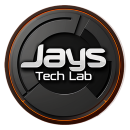Table of Contents
🤖 AI Research and Development
🏛️ Leading Research Institutions
Leading research institutions in AI include MIT, Stanford University, and the University of California, Berkeley. These institutions conduct cutting-edge research and contribute significantly to AI advancements.
🚀 Recent Breakthroughs
Recent AI breakthroughs include advancements in natural language processing, reinforcement learning, and generative models. These developments have expanded AI's capabilities and applications.
🔮 Future Research Directions
Future research directions in AI focus on creating more generalizable AI systems, improving interpretability, and addressing ethical concerns. Collaborative efforts between academia, industry, and government are essential for progress.
🛠️ AI Tools and Software
🧰 AI Development Tools
AI development tools include frameworks and libraries like TensorFlow, PyTorch, and Keras. These tools provide the building blocks for developing, training, and deploying AI models.
🌐 AI Software Platforms
AI software platforms offer integrated environments for AI development, including Google Cloud AI, Microsoft Azure AI, and IBM Watson. These platforms provide resources and services for AI projects.
🌍 Impact of AI on Society
✅ Positive Impacts
AI positively impacts society by improving healthcare, enhancing education, and increasing efficiency in various industries. It enables personalized experiences, advances scientific research, and creates new opportunities.
⚠️ Negative Impacts
Negative impacts of AI include job displacement, ethical concerns, and potential misuse. Addressing these issues involves developing fair and transparent AI systems and implementing appropriate regulations.
⚖️ Balancing the Impacts
Balancing the positive and negative impacts of AI requires collaborative efforts from governments, industries, and communities. Ensuring that AI development aligns with societal values and ethical standards is crucial.
💻 Getting Started with AI Programming
⚙️ Setting Up Your Environment
Setting up an AI programming environment involves installing necessary software, such as Python, and libraries like TensorFlow and Keras. Tools like Jupyter Notebook can enhance the development experience.
📝 First AI Program
Writing your first AI program typically involves creating a simple machine learning model, such as a linear regression model, to understand the basics of AI programming and model training.
⚙️ Popular AI Frameworks
📊 TensorFlow
TensorFlow is an open-source AI framework developed by Google. It is widely used for machine learning and deep learning applications, providing a comprehensive ecosystem for building and deploying AI models.
🔄 PyTorch
PyTorch, developed by Facebook, is another popular open-source AI framework. It is known for its dynamic computational graph and ease of use, making it a favorite among researchers and developers.
🧠 Scikit-Learn
Scikit-Learn is a Python library for machine learning. It offers simple and efficient tools for data mining and data analysis, supporting various supervised and unsupervised learning algorithms.
🛠️ Building AI Models
📥 Data Collection
Data collection is the first step in building AI models. It involves gathering relevant data from various sources, such as databases, APIs, and web scraping. Ensuring data quality and diversity is crucial.
🔄 Data Preprocessing
Data preprocessing includes cleaning, normalizing, and transforming data to prepare it for modeling. Techniques like handling missing values, encoding categorical variables, and scaling are essential for effective data preprocessing.
🧑💻 Model Training
Model training involves feeding the preprocessed data into an AI algorithm to learn patterns and make predictions. Selecting the right algorithm and tuning hyperparameters are critical steps in model training.
🧮 Evaluating AI Models
📊 Evaluation Metrics
Evaluation metrics like accuracy, precision, recall, and F1-score are used to assess the performance of AI models. These metrics help determine how well the model generalizes to new data.
🔍 Model Validation
Model validation techniques, such as cross-validation and holdout validation, ensure that the AI model performs well on unseen data. This step helps prevent overfitting and improves model robustness.
🚀 Model Deployment
Deploying AI models involves integrating them into production environments where they can make real-time predictions. Tools like Docker and Kubernetes facilitate scalable and reliable model deployment.
🌐 AI and Big Data
💾 Understanding Big Data
Big data refers to large, complex datasets that cannot be processed using traditional methods. Characteristics of big data include volume, velocity, and variety.
📈 AI Applications in Big Data
AI applications in big data include predictive analytics, anomaly detection, and sentiment analysis. AI algorithms can analyze vast amounts of data to extract valuable insights and patterns.
⚛️ Quantum Computing and AI
🔬 Basics of Quantum Computing
Quantum computing leverages quantum mechanics principles to perform computations. Unlike classical computers, quantum computers use qubits, which can represent multiple states simultaneously.
🤖 Quantum AI Applications
Quantum AI applications involve using quantum computing to solve complex AI problems more efficiently. Potential applications include optimization, machine learning, and cryptography.
🤖 AI in Robotics
🛠️ Basics of Robotics
Robotics involves designing, building, and operating robots. Robots can be autonomous or semi-autonomous and are used in various industries for tasks like manufacturing, healthcare, and exploration.
🤖 AI-Powered Robots
AI-powered robots use machine learning and computer vision to perform tasks autonomously. Examples include robotic vacuum cleaners, surgical robots, and industrial robots.
🌐 AI and the Internet of Things (IoT)
🏠 IoT Basics
The Internet of Things (IoT) refers to interconnected devices that communicate and exchange data. IoT devices include smart home appliances, wearable technology, and industrial sensors.
🔗 AI Integration with IoT
AI integration with IoT enhances device capabilities, enabling real-time data analysis and decision-making. Applications include smart cities, predictive maintenance, and personalized healthcare.
📜 Regulations and AI
⚖️ Current Regulations
Current regulations for AI vary by country and include guidelines for data protection, ethical use, and transparency. Notable examples are the EU's GDPR and the US's AI Initiative.
📑 Future Legal Considerations
Future legal considerations for AI involve addressing issues like accountability, bias, and ethical standards. Developing comprehensive and adaptive regulations is essential for responsible AI deployment.
🏆 AI Competitions and Challenges
🎖️ Popular AI Competitions
Popular AI competitions, such as those hosted by Kaggle and the Defense Advanced Research Projects Agency (DARPA), provide platforms for researchers and developers to solve real-world problems using AI.
📝 How to Participate
Participating in AI competitions involves registering on the platform, understanding the problem statement, and developing and submitting AI models for evaluation. Collaboration and learning from others are key benefits.
🏅 Benefits of Competitions
AI competitions offer several benefits, including skill development, networking opportunities, and potential career advancements. They also provide a practical way to apply AI knowledge to real-world problems.
💻 AI in Open Source
📂 Open Source AI Projects
Open source AI projects, such as TensorFlow, PyTorch, and OpenAI's GPT-3, encourage collaboration and innovation. These projects provide access to powerful tools and resources for AI development.
I have added this video to showcase how most free open source software is readily available for anyone to get started.
🤝 Contributions and Collaborations
Contributing to open source AI projects involves writing code, improving documentation, and sharing research. Collaborations within the open-source community drive advancements and democratize AI technology.
📌 Conclusion
🔄 Recap of Key Points
Embarking on a journey with AI and computers involves understanding their basics, exploring various applications, and recognizing their impact on society. AI's potential to transform industries and improve lives is immense.
🌟 Future Outlook
The future of AI and computers promises continued innovation, with advancements in areas like quantum computing, robotics, and ethical AI. Staying informed and engaged with these technologies is crucial for leveraging their benefits and addressing their challenges.
❓ FAQs
🤖 What is the difference between narrow AI and general AI?
Narrow AI is designed for specific tasks, like voice recognition or playing chess. General AI aims to perform any intellectual task a human can do but is still theoretical.
🏥 How does AI improve healthcare?
AI improves healthcare through predictive analytics, personalized treatment plans, and robotic surgery, enhancing patient outcomes and operational efficiency.
💻 What programming languages are commonly used in AI?
Python, R, and Java are commonly used for AI due to their powerful libraries and tools for machine learning and data analysis.
⚖️ What are some ethical concerns with AI?
Ethical concerns with AI include job displacement, decision-making transparency, bias, and privacy issues. Addressing these requires careful design and regulation.
🎓 How can I start learning AI?
Start learning AI through online courses, books, and joining AI communities. Practical projects and competitions can also help build your skills.
👷♂️ What impact does AI have on the job market?
AI creates new job opportunities while displacing some existing roles. Reskilling and upskilling are essential to adapt to these changes and leverage new opportunities.






